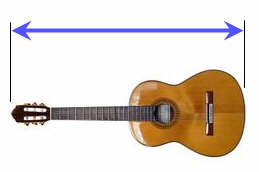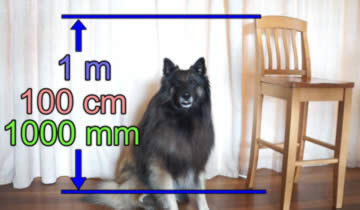Distance Between 2 Points
Here is how to calculate the distance between two points when you know their coordinates:
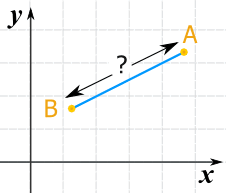
Let us call the two points A and B
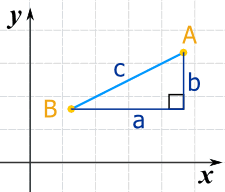
And with a little help from Pythagoras we know that:
a2 + b2 = c2
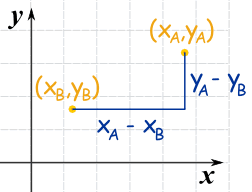
Now label the coordinates of points A and B.
xA means the x-coordinate of point A
yA means the y-coordinate of point A
yA means the y-coordinate of point A
The horizontal distance a is (xA − xB)
The vertical distance b is (yA − yB)
Now we can solve for c (the distance between the points):
Start with:c2 = a2 + b2
Put in the calculations for a and b:c2 = (xA − xB)2 + (yA − yB)2
And the final result:![c = square root of [(xA-xB)^2+(yA-yB)^2]](https://www.mathsisfun.com/algebra/images/dist-2-points-equn.gif)
Examples
Example 1
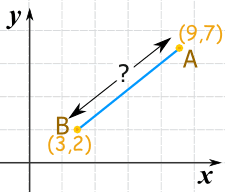
| Fill in the values: | ||
Example 2
It doesn't matter what order the points are in, because squaring removes any negatives:
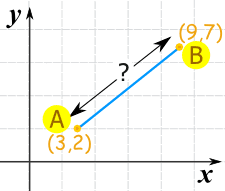
| Fill in the values: | ||




